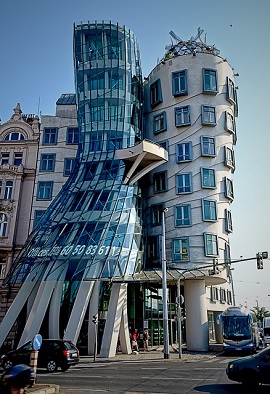Context
In its widest sense, the term 'context' refers to the circumstances or interrelated conditions that are relevant to something that exists or occurs.
In terms of the built environment, 'context' can refer to the conditions which surround a particular site or project, and to which it should relate and connect to in some way. The buildings and structures that make up the built environment do not exist in isolation but are conceived and designed in order to respond to, support and enhance their surroundings.
With the notion of context come connotations of the existing fabric, the locality, tradition and the vernacular. By embedding the intentions of a design within the essence of its surroundings, a connection linking new and old can be made, creating or maintaining a metaphysical 'place'.
The context of a building or site might include:
- The topography of the area.
- The site’s history and previous uses.
- Local culture.
- Architectural style.
- Local materials and construction techniques.
- Weather and microclimate.
- Political conditions.
- National and local policy.
- The state of the economy.
These factors can be analysed, adapted and adopted to make a proposed development 'fit' into its context. This can give meaning to different aspects of a project through reference to its wider surroundings.
Context is one the aspects of design that might be considered when a planning application is made. Planners may reject a planning application if they do not feel a proposed development fits within the local context.
Contextualism, or contextual architecture, is a principle of design in which a structure is designed in response to its specific urban and natural environment.
Urban Design Guidelines for Victoria, published by The State of Victoria Department of Environment, Land, Water and Planning in 2017, suggests that urban context refers to: ‘…the broader setting of an identified area. The context may include the physical surroundings of topography, movement patterns and infrastructure, built form and uses, the governance structures, and the cultural, social and economic environment. The urban context can include the community vision for the area, and preferred future character, form and function.’
It suggests that: 'Similar to a site analysis, context analysis provides a detailed description and examination of aspects of the wider area around a site, to determine how these aspects will effect and contribute to the design of a proposed building development or public space design. An urban context analysis informs the building development or public space design response.'
Conservation Principles, Guidance for the sustainable management of the historic environment in Northern Ireland, published by the Historic Environment Division in July 2021, defines context as: ‘Any relationship between a heritage asset and its setting, including other places and its past, relevant to the values of that heritage asset.’
[edit] Related articles on Designing Buildings
Featured articles and news
RTPI leader to become new CIOB Chief Executive Officer
Dr Victoria Hills MRTPI, FICE to take over after Caroline Gumble’s departure.
Social and affordable housing, a long term plan for delivery
The “Delivering a Decade of Renewal for Social and Affordable Housing” strategy sets out future path.
A change to adoptive architecture
Effects of global weather warming on architectural detailing, material choice and human interaction.
The proposed publicly owned and backed subsidiary of Homes England, to facilitate new homes.
How big is the problem and what can we do to mitigate the effects?
Overheating guidance and tools for building designers
A number of cool guides to help with the heat.
The UK's Modern Industrial Strategy: A 10 year plan
Previous consultation criticism, current key elements and general support with some persisting reservations.
Building Safety Regulator reforms
New roles, new staff and a new fast track service pave the way for a single construction regulator.
Architectural Technologist CPDs and Communications
CIAT CPD… and how you can do it!
Cooling centres and cool spaces
Managing extreme heat in cities by directing the public to places for heat stress relief and water sources.
Winter gardens: A brief history and warm variations
Extending the season with glass in different forms and terms.
Restoring Great Yarmouth's Winter Gardens
Transforming one of the least sustainable constructions imaginable.
Construction Skills Mission Board launch sector drive
Newly formed government and industry collaboration set strategy for recruiting an additional 100,000 construction workers a year.
New Architects Code comes into effect in September 2025
ARB Architects Code of Conduct and Practice available with ongoing consultation regarding guidance.
Welsh Skills Body (Medr) launches ambitious plan
The new skills body brings together funding and regulation of tertiary education and research for the devolved nation.
Paul Gandy FCIOB announced as next CIOB President
Former Tilbury Douglas CEO takes helm.
UK Infrastructure: A 10 Year Strategy. In brief with reactions
With the National Infrastructure and Service Transformation Authority (NISTA).























